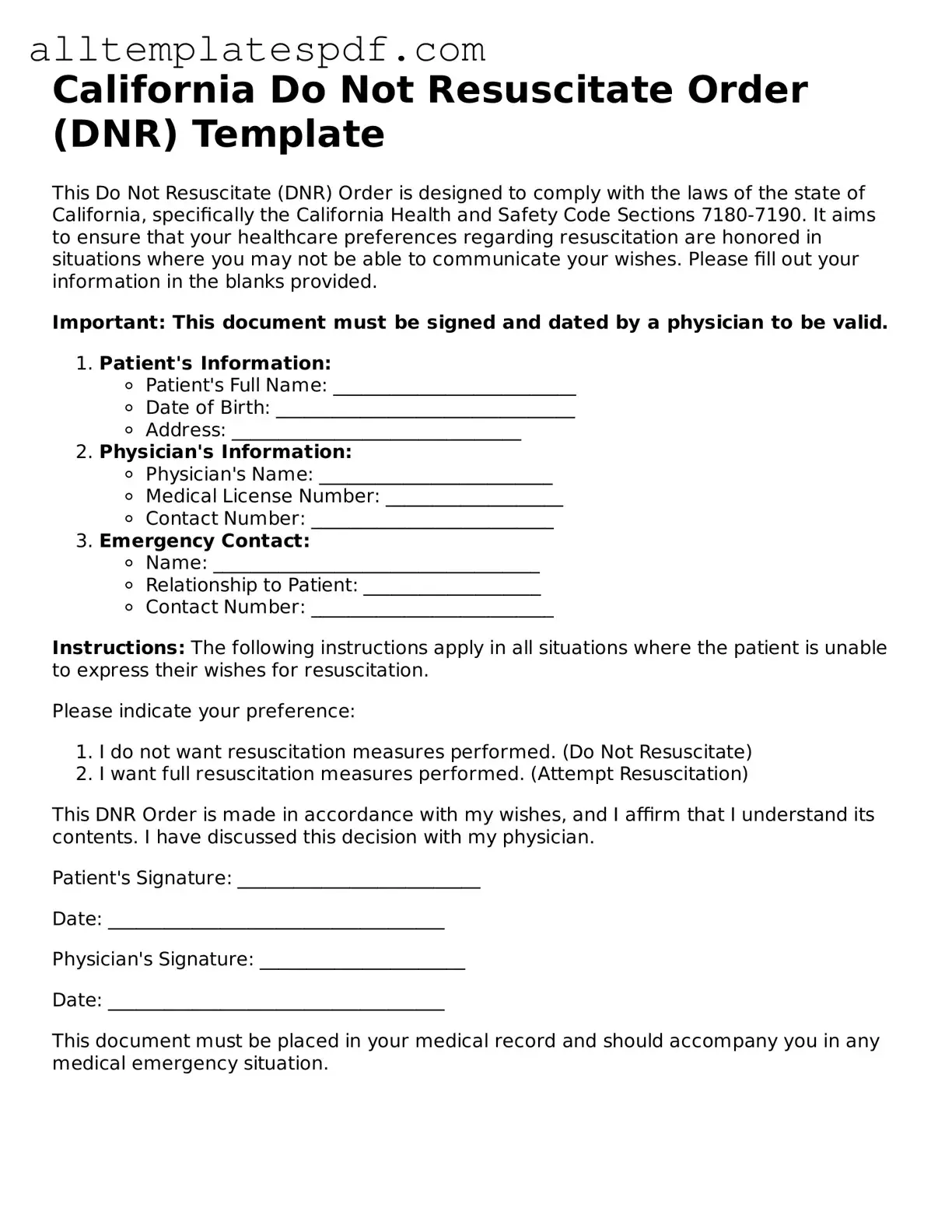Blank Do Not Resuscitate Order Template for the State of California
A California Do Not Resuscitate Order (DNR) form is a legal document that allows individuals to express their wishes regarding resuscitation efforts in the event of a medical emergency. By completing this form, patients can ensure that their preferences are honored by healthcare providers, particularly when they are unable to communicate their desires. For those considering this important decision, filling out the form can provide peace of mind; click the button below to get started.
Open Editor
